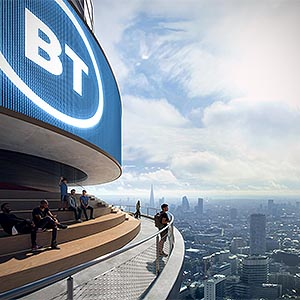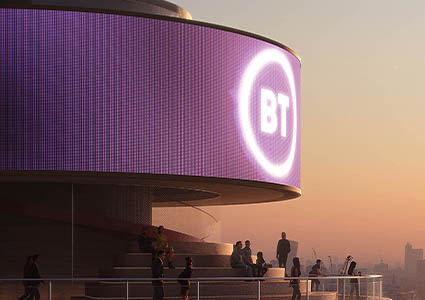The future of sustainable architecture
In the rapidly evolving landscape of the built environment, the need for sustainable design has become more pressing than ever. As the world grapples with the realities of climate change, architects are increasingly turning to innovative solutions to minimise environmental impact. One such solution is creative adaptive reuse. Ben Stuart, Co-founder of Able Partners, highlights the importance of this as a sustainable approach that forces architects to master the core principles that underscore the practice; creativity and technical knowledge.
Creative adaptive reuse involves repurposing existing buildings for new uses, rather than demolishing them and constructing new structures from scratch.

By transforming old factories into modern office spaces, converting warehouses into homes, or repurposing historic buildings into cultural hubs, architects have the power to create connections between past and present. The sustainability argument for reuse is clear, but this approach can also help preserve cultural heritage and identity of neighbourhoods, foster a sense of continuity for local communities, and stimulate local economies.
Environmental benefits
Adaptive reuse is rooted in sustainability, as it allows architects to breathe new life into existing assets and reduce the environmental footprint associated with demolition and new construction.
According to the Royal Institute of British Architects, 38 per cent of global carbon emissions are attributable to the built environment. Cities are only becoming more densely populated, and with the new UK Government promising 1.5 million new homes over five years, the UK’s demand for sustainable building practices is only going to increase.
Adaptive reuse promotes a circular economy that helps to reduce industry impact on the planet in myriad ways – whether by utilising existing embodied carbon within building materials, reducing the need for demolition and landfill space, or improving energy efficiency of an aging asset. While the practice often comes with cost and time challenges, this is a small price to pay long-term.
Creative challenge and opportunities
The most exciting part about working with existing structures is the opportunity to think more creatively about new spaces. Navigating constraints like structural limitations and historical preservation requirements requires a high degree of problem-solving – but equally present unique opportunities for innovation.
The juxtaposition of old and new elements can create visually compelling spaces that honour the past while embracing the future, often becoming iconic landmarks.
The Tate Modern is a brilliant example of this, as the former power station was transformed into one of the world’s leading contemporary art museums. The project retained much of the original building’s industrial character, seamlessly blending old and new architectural elements, and creating a cultural destination that attracts millions of visitors annually and drives revitalisation of the surrounding area.
Leveraging digital technology
Modern technology is making adaptive reuse faster, simpler, and more precise. It’s fascinating that advancements allow architects to almost immediately transfer an idea into virtual reality through highly accurate software, such as D5, Rhino and Revit, along with photorealistic 3D surveys.
 With tools allowing for real-time design adjustments, huge projects that used to take large teams months to model and test can now be completed quickly by a few people. Crucially, such technology enhances transparency across all stakeholders, providing a clear vision of the project’s potential and more understanding of the options early on.
With tools allowing for real-time design adjustments, huge projects that used to take large teams months to model and test can now be completed quickly by a few people. Crucially, such technology enhances transparency across all stakeholders, providing a clear vision of the project’s potential and more understanding of the options early on.
Modern buildings must have an almost hyper-logical reason to exist, being ruthlessly efficient from every angle. So, while accurately design mapping historic buildings can be a complex task, it gives architects awareness of every part of the building that needs enhancing, thereby making technology a gateway for stunning architectural feats to become reality.
Ideas delivered
Creative adaptive reuse really allows architects to push boundaries and capture imagination.
Collaborating on imaginative design projects with our network of engineers and industry stakeholders allows us to remain true to our creative roots, while pushing architectural boundaries as a collective.
As an example, we have produced reimagined designs for the BT Tower near our studio. Starting with a cultural focus on the ground, our designs draw visitors into an engaging journey up the structure for those ‘Instagram moments’. This leads through the podium space housing co-working, office and hotel through to a viewing platform at the top of the 177-metre structure, along with indoor and outdoor galleries that would provide 360-degree views of London’s skyline.
Such reuse would involve stripping away the outdated telecoms functions, placing these elements into new casing and reusing as much existing material as possible. By replacing them with demountable, modular structures, as well as circular water strategies and PVs, our goal was to ensure the circularity of the building into the future. The building has since been purchased by MCR Hotels, who may well integrate some of these ideas.
A final note
Creative adaptive reuse represents the future of sustainable architecture, and its multi-faceted benefits should make it a key driver for all designers like it is for us at Able Partners.
Repurposing existing buildings challenges architects and developers to think creatively and innovatively, using the latest technology to create spaces that are functional and sustainable but also rich in character and history. As we move forward, embracing adaptive reuse will be essential in creating a built environment that is both resilient and reflective of our collective heritage.
For a list of the sources used in this article, please contact the editor.
Able Partners is a creative, RIBA-chartered architecture practice working to create experiences, buildings and places that inspire people. From its London studio, it works to improve cities and the experience of living in them. Its motivation is to create and deliver interesting, affordable, sustainable projects that improve the world and challenge.
